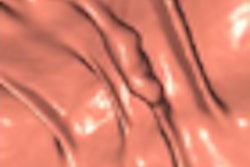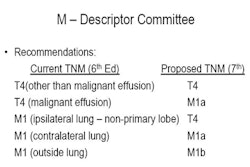TORONTO - A new study by Canadian researchers has confirmed FDG-PET/CT's benefits in managing pediatric bone and soft-tissue tumors when caregivers chart the progress or regression of the cancer at four scan time intervals.
The research from British Columbia Children's Hospital in Vancouver also concluded surveillance scans should only be performed when symptoms are present or to confirm an abnormality found on another imaging modality.
Lead author Dr. Angela Byrne from the hospital's radiology department presented the findings Monday at the SNM annual meeting.
Between July 2005 and June 2009, 89 patients were assessed for suspected bone tumors; 74 of those patients (32 males, 42 females, with an age range of 3 months to 18 years at diagnosis) had subsequent biopsy-proven sarcoma. The retrospective review analyzed the radiology, pathology, and clinical course of patients with documented bone and soft-tissue sarcomas.
The study included 27 patients with osteogenic sarcoma, 24 patients with Ewing's sarcoma, and 23 with rhabdomyosarcoma and soft-tissue sarcomas.
Initial diagnoses
After initial radiographs, bone scans, and MRI exams, a PET/CT scan was conducted with a 16-slice CT scanner (Biograph, Siemens Healthcare, Malvern PA). Patient preparation followed standard protocol, including a six-hour fast and one-hour uptake period. FDG was administered on a weight basis of 0.14 mCi/kg.
The PET/CT scan was a whole-body exam, with a single CT scan for both attenuation correction and diagnostic evaluation in the majority of patients. Most of the follow-up scans were performed with a low-dose technique with 80 kVp and 40 mAs.
"In addition, because sarcoma has a propensity to metastasize to the lungs, an additional diagnostic breath-hold CT scan was obtained in all these patients," Byrne said.
Each PET/CT image was evaluated for metabolic activity relative to sarcoma type, response assessment compared to pathological necrosis, and the presence or absence of metastatic disease, as well as to determine the change of surgical approach and management impact.
Scan time intervals
The researchers then segmented the PET/CT images into time intervals. Scans were conducted at staging before biopsy, prior to local control by either radiotherapy or surgical therapy, at the completion of planned therapy, and finally for follow-up surveillance.
Generally, patients at the first time interval "had symptoms of positive imaging, although because we started at a certain time with this study, some patients had had a PET/CT scan without any clinical indication or follow-up surveillance," Byrne said.
In the first time interval, the PET/CT scan was evaluated for staging, early presence of metastatic disease, and tumor characterization. Researcher also evaluated the SUVmax of the primary tumor site.
The initial scans diagnosed nine patients with metastatic disease. Of those patients, three had unexpected metastatic disease diagnosed only by PET and undetected on any other imaging modality, resulting in a treatment management change of 33%.
Tumor progression
At the second time interval of prelocal therapy, tumor response was assessed by comparing the SUV change to the percent of necrosis on pathology. "We again looked for metastatic disease and for any change in surgical approach," Byrne said.
At this time interval, researchers looked for a response assessment, with 31 patients evaluated by PET/CT; 22 of those patients had a pathological correlation.
"For seven patients, PET/CT altered surgical management," she added. "For three patients, there was more extensive surgery, because there were more sites of disease than determined by other imaging modalities. With four patients, it was less extensive, with limb-sparing surgery."
At the third time interval at the end of therapy, researchers reviewed 12 scans, with five patients showing recurrent or progression of disease that impacted management in 42% of the cases.
Surveillance scans
Finally, 10 patients had surveillance scans with no clinical symptoms. For those patients, there was "no impact on their subsequent treatment management," Byrne said. "However, for the 16 patients who had either symptoms or abnormalities on other imaging modalities, all of these patients had their management affected by the [results of] the PET/CT scan."
Based on those findings, the researchers concluded that in managing pediatric bone and soft-tissue sarcoma, "PET/CT scan acquisition time intervals are appropriate, that PET is best for systemic staging at diagnosis and suspected relapse, and it is excellent for metastatic disease," Byrne said. "In addition, the PET response mirrored the pathological necrosis and, therefore, could be described as a surrogate marker."
She also recommended "surveillance scans should only be performed when symptoms present or for confirmation of an abnormality on another modality, and not just routinely when there are no symptoms present."
By Wayne Forrest
AuntMinnie.com staff writer
June 16, 2009
Related Reading
Scanning time trumps dose in FDG-PET/CT of large patients, June 10, 2009
PET/CT shows early chemo results, April 16, 2009
Soft-tissue sarcoma outcomes vary widely by race, ethnicity, January 25, 2008
PET/CT shows great sensitivity, concordance with soft-tissue sarcoma, August 23, 2007
Copyright © 2009 AuntMinnie.com




















